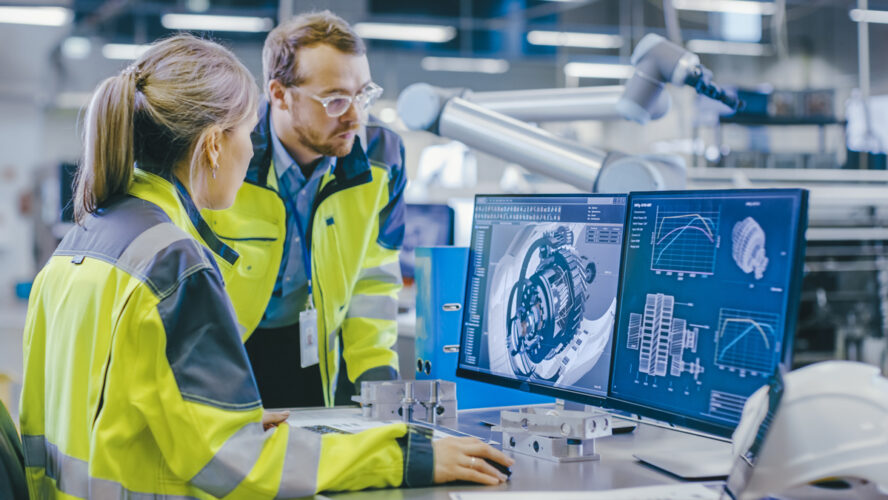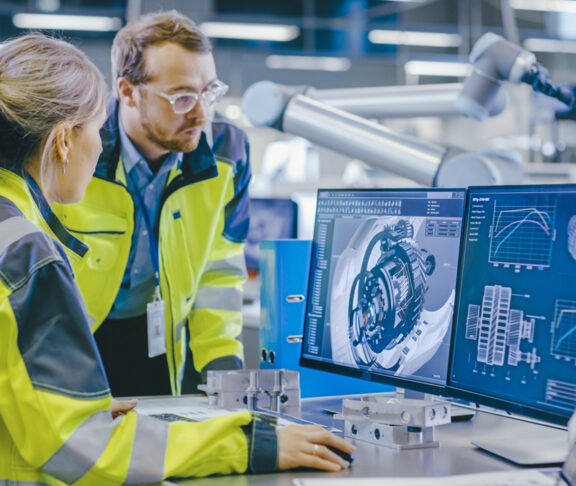
Paolo Guglielmini
President and CEO, Hexagon
Reality technology captures physical reality, creates immersive digitalisation and actively changes the real world to improve outcomes.
Hexagon operates in over 50 countries with a global workforce of 25,000, serving industries from manufacturing and construction to mining and agriculture.
Reality technology turns data into value
Industries worldwide face a tough balancing act. They must continue to innovate and deliver economic growth while also increasing responsibility. They must improve efficiency, productivity and quality while reducing waste, pollution and carbon footprint. The stakes are high, and the clock keeps ticking.
Although today’s businesses have more data than ever before, there isn’t a playbook for transforming it into tangible, real-world value. Inefficiency, skill shortages and sustainability pressures persist.
Despite these challenges, we are optimistic. Industries can unlock substantial gains when they can put the right data to work in the right context. At Hexagon, we can help them do that.
Transforming data into real-world outcomes
The key is to make data easier to gather, share and analyse within an ecosystem that can also drive real-world action. Until now, that kind of physical-digital ecosystem required mixing and matching many different technology partners.
We offer a more integrated approach through open platforms. These facilitate collaboration, foster new ways of thinking, drive positive transformation and increase the value of customers’ data over time.
It starts with high-end sensors that capture everything from micron-sized product parts to entire landscapes like mines, farms and even the surface of Mars. It turns data from these complex physical places into high-fidelity 3D models.
Our company then breathes life into the data with human expertise and AI, adding context and insights to make it smarter and more valuable for improved design, simulation and testing. The next step is to share that digital intelligence across devices and platforms, so specialists can collaborate in immersive visual environments that speed up problem-solving and decision-making.
The approach comes full circle with solutions that steer, control and autonomise technologies and processes back in the real world. When data flows freely, anything is possible. Our reality technology is already trusted in 95% of all car manufacturing, 75% of all smartphones and 90% of all aeroplanes. The impact is wide-ranging: increasing transparency, reducing error and informing decision-making.
Reality technology in action
When an ecological crisis hit the Mar Menor, one of Europe’s largest saltwater lagoons in Campo de Cartagena, Spain, reality technology was put to work. The region faced environmental damage due to a 2016 algae bloom. Restoring it was complicated because of the complex agricultural, livestock and mining runoff affecting the lagoon.
Using reality technology, Spain’s government created a 3D replica of the 1,600 sq. km. area from 51,000 nadiral and 200,000 oblique images and over four terabytes of LiDAR data, rivalling the Hubble Telescope in terms of data collection. With it, local authorities could accurately simulate environmental threats and collaborate on restoration strategies to actively improve the lagoon’s condition.
Today, the water is clearing and people are returning to its beaches. Isabel Quiles, a spatial data analyst on the project, says: “It is much more than a 3D visualisation tool — it’s a platform that can simulate the future and facilitate powerful decision-making.”
Shaping a responsible future
Hexagon’s advanced technologies allow stakeholders to balance economic growth with environmental responsibility. We are committed to collaborating with customers to solve shared challenges and shape a responsible future.
Our solutions help optimise supply chains, monitor environmental impact, ensure safety compliance and inform decision-making across dozens of industries. Ultimately, our role is pivotal in creating a future where businesses and humanity can thrive.



